
Automotive IoT: applications, real-life examples & technologies
December 4, 2023
- Home
- Internet of things
- Automotive IoT

by Ilya Skiba,
IoT Solution Architect
Automotive IoT refers to cloud-connected IoT devices (sensors, cameras, GPS trackers, telematics solutions) installed into vehicles to gather real-time data and provide a safer and smarter driving experience.
Additionally, IoT solutions are applied in the automotive industry for car production optimization, predictive maintenance, telematics systems, effective fleet management, car-to-car interaction, AI-powered assisted driving, usage-based insurance, and personalized in-car infotainment.
Backed by 25+ years of experience in software development, Itransition is ready to help you transform your automotive software by implementing IoT technologies.
The state of the automotive IoT market
The automotive IoT market is set to experience significant growth due to the increasing demand for electric vehicles and in-car infotainment experience, the upsurge of smart cities, and various governments calling for road safety solutions.
The value of the global IoT-enabled automotive sector in 2023
Markets and Markets
The expected global automotive IoT market value in 2030 with a CAGR of 25.13%
Precedence Research
IoT in the automotive industry: 8 use cases
Here is how various automotive industry players, from original equipment manufacturers (OEMs) and car manufacturers to shipping companies and regular drivers, make use of IoT technology.
Connected vehicles
Automotive IoT is an essential part of connected car technology enabling vehicles to interact with external objects and road users like other vehicles, people, or road infrastructure, and ensure greater road safety and traffic efficiency. There are several communication pattern types in connected cars:
Vehicle-to-Vehicle (V2V) connection
ensures real-time data exchange between cars on the road. Vehicles share information about their location and speed, which helps regular drivers prevent accidents and emergency vehicles move freer in traffic jams.
Vehicle-to-Pedestrian (V2P) connection
implies the communication between a vehicle and pedestrians or cyclists nearby to prevent collisions on the road.
Vehicle-to-Infrastructure (V2I) communication
enables data exchange between vehicles and roadway infrastructure elements, such as cameras, overhead RFID readers, traffic lights, road signs, streetlights, and parking meters, using vehicle-to-network (V2N) cellular connection. The data received from the vehicles can be used to set speed limits or adjust traffic signal timing for better road efficiency. And vice versa, infrastructure data can provide drivers with information on road conditions, accidents, traffic jams, and available parking lots nearby.
Vehicle-to-Everything (V2E) communication
allows cars to communicate with everything that can affect the vehicle while driving, i.e., the driver, pedestrians, road infrastructure, and cellular network. In other words, V2E connection encompasses all types of connected cars’ communication patterns: V2I (vehicle-to-infrastructure), V2N (vehicle-to-network), V2V (vehicle-to-vehicle), and V2P (vehicle-to-pedestrian).
Autonomous driving
Autonomous vehicle technology, which enables cars to travel without human intervention, also relies greatly on IoT. Autonomous vehicles are powered by main and advanced driver assistance systems and active safety mechanisms. Active safety refers to AI-enabled car systems that can prevent road accidents with the help of emergency braking, driver distraction prevention, and alcohol interlock devices.
The US is currently developing guidelines for the obligatory implementation of active safety measures in new vehicles, while Europe introduced mandatory active safety measures in 2022. The Society of Automotive Engineers (SAE) developed five levels of car automation:
Level 1
involves moderate automation with the help of driver assistance systems. A driver is in charge of steering, accelerating, and braking, while the driver assistant helps with lane centering or cruise control.
Level 2
implies a greater level of automation due to the introduction of an advanced driver-assistance system (ADAS) for adaptive cruise control and lane centering. Should the driver get distracted, the car won’t slide off the road because the system can assist with steering and accelerating or braking. Most automated cars today are currently labeled with 1 level or 2 level of automation.
Level 3
is the level where car automation begins to replace human driving, and self-driving is possible under certain conditions, like slow driving in traffic jams. Under other non-specified conditions, the driver must control the steering.
Level 4
refers to a high level of car automation with a long list of conditions when self-driving is possible, including driverless taxis. Still, human intervention is required in unusual situations.
Level 5
implies complete driving automation with no human intervention necessary. This level is also closely related to the notion of active safety.
Predictive maintenance
Integration of IoT sensors into various vehicle parts can simplify fleet and personal car maintenance. These sensors can collect data on a car's condition, fuel consumption, engine temperature, and other factors and transmit it to a cloud analytics center for further analysis. Employing predictive analytics techniques, the system can forecast when vehicle parts require upgrade, maintenance, or replacement or detect pre-failure conditions and then notify car users or fleet managers.
Fleet management
IoT sensors integrated into vehicles facilitate effective and smart fleet management by gathering real-time data on the vehicle’s performance, fuel consumption, tire pressure, oil levels, and mileage into a single storage for fleet managers’ easy access. Connecting the car to the internet and GPS, IoT allows a fleet manager to track the location of all vehicles and automatically create the most optimal routes. In addition, IoT sensors can analyze the cargo’s weight and temperature in case of perishable food or medicine transportation.
In-car entertainment
Today, in-car entertainment or in-vehicle infotainment systems are no longer limited to a radio receiver and CD player. Modern IoT systems can entertain drivers and passengers throughout the trip with music, video streaming, navigation, Wi-Fi connection, a voice assistant, and hands-free calls. Also, in-car entertainment screens can have widgets to adjust the indoor temperature or interact with the digital car interior to accommodate the seat position or the wheel.
Usage-based insurance (UBI)
Insurance companies can use the IoT technology incorporated into vehicles to provide usage-based insurance. The IoT sensors track the driving speed, acceleration rate, braking pattern, and phone usage during driving. Based on the person’s driving pattern, insurance companies issue personalized insurance premiums, so the more careless the driver, the higher the insurance fee.
Optimized car manufacturing
IoT data analytics solutions embedded into automotive production sites help increase manufacturing efficiency, save costs, and create more high-quality vehicles. Car manufacturers can leverage IoT solutions to track the supply chain of raw materials and individual car components, supervise the manufacturing equipment's condition, and take preventive measures to avoid breakdowns. By gathering gigabytes of real-time data, automakers can detect and optimize plant energy consumption, oversee the production line in real-time, and better control the cars’ quality at every production stage.
Over-the-air software updates
IoT connectivity allows for wireless over-the-air updates of the car’s infotainment and navigation systems. Car manufacturers regularly upload software updates to the cloud, so car owners can download them using Wi-Fi or cellular connection.
Ready to integrate IoT technology into your automotive company?
Real-life examples of automotive IoT
Many renowned car manufacturers are already reaping the benefits of IoT-connected solutions. Here are the six most prominent real-life examples of IoT usage in the automobile industry.
Waymo self-driving cars
Waymo offers the world’s first self-driving taxi without a backup driver in the front seat. In 2020, the Waymo One service became available to the public in the Phoenix Metropolitan Area, and in 2022, the taxi was launched in San Francisco. During the trip, taxi passengers can enjoy more privacy, listen to their preferred music, and set a comfortable indoor temperature.
Autonomous driving technology is powered by LiDAR, cameras, radar sensors, as well as AI and ML algorithms.
Tesla autopilot
Compared to Waymo self-driving cars that use ultrasonic sensors, Tesla Autopilot relies on camera-based technology to ensure complete autonomous driving capabilities. Without human intervention, Tesla cars are capable of autonomous autosteering, navigation, and lane-changing. Still, driver presence in the front seat is necessary.
Mercedes-Benz Drive Pilot
With Drive Pilot, Mercedes drivers can hand over the steering process to the car system on particular road sections and in cases of high traffic density. Using LiDAR, cameras, road wetness sensors, and microphones for detecting emergency vehicles, the system can independently control the speed and lane and react to unexpected traffic situations.
Ford BlueCruise hands-free driving
Ford’s BlueCruise control system uses adaptive cruise control, lane centering, and speed sign recognition features. BlueCruise is only available on certain roads in the US, but it still can accelerate, brake, and keep the car within the lane and allows drivers to drive hands-free. Still, BlueCruise doesn’t provide an utterly self-driving mode, so the vehicle is equipped with infrared driver-facing cameras monitoring the driver's attention to the road.
Remote control parking with BMW
With a single smartphone touch, BMW owners can park their cars remotely by standing outside the vehicle. The parking is performed via a mobile app with a BMW Digital Key and Bluetooth connection. The system automatically scans for parking spaces and suggests optimal parking maneuvers. Remote control parking is handy when the driver needs to leave the car in a narrow parking spot.
Cadillac Escalade 2023 in-car infotainment
The new Cadillac Escalade 2023 has impressed drivers with its in-vehicle infotainment system. The car has a 38-inch curved display that offers AR-enabled navigation, hands-free phone calls, and information about the car’s condition. Cadillac can wirelessly connect to integrated Apple CarPlay, Android Auto, and Amazon Alexa. Escalade’s system offers wireless charging, ambient lighting with different colors inside the car, microphones across the compartment to facilitate conversation, and rear-seat entertainment displays.
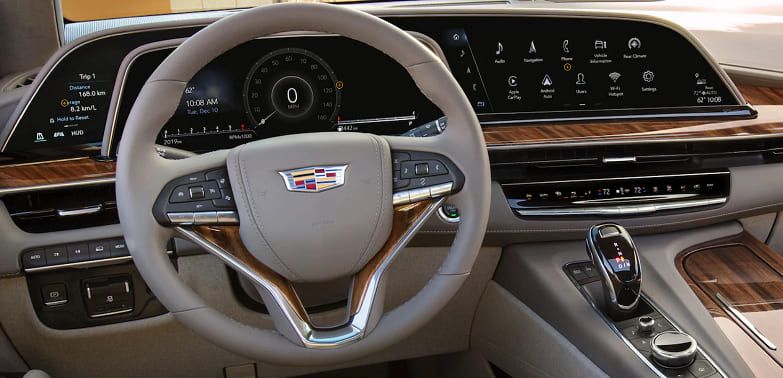
Image title: Cadillac curved OLED display
Image source: cadillac.com
MineStar management solution from Cat
The world’s largest construction and mining equipment manufacturer, Caterpillar, introduced several technological products under the MineStar trademark. With Cat MineStar solutions, mining companies can automate their mining processes, remotely control machines, get real-time equipment health analytics, and improve staff safety by monitoring machine operators’ fatigue and distraction and notifying them of potential hazards.
The architecture of autonomous vehicles
The high-level architecture of self-driving cars comprises a range of hardware and software components.
Scheme title: Self-driving cars high-level software architecture
Data source: coursera.org — Introduction to Self-Driving Cars. University of Toronto
Sensors
The vehicle communicates with the environment around it using a variety of sensors of different natures and purposes. Commonly used sensors include ultrasonic sensors, radars, LiDARs, cameras, infrared sensors, GPS, and odometry sensors.
Environment perception
Data from sensors is transmitted to the environment perception module that localizes the autonomous car in space and identifies and classifies the objects around it. Using data from cameras and LiDAR sensors, the system recognizes the location of static objects around the vehicle, like the car’s lane position, nearby traffic lights, and signs. The system also includes tracker and prediction modules responsible for detecting dynamic objects (like moving cars, cyclists, and pedestrians), analyzing their movement history, and predicting their motion path.
Scheme title: Environment perception module in autonomous cars
Data source: coursera.org — Introduction to Self-Driving Cars. University of Toronto
Environment mapping
Interacting closely with the environment perception module and car sensors, the environment mapping module creates a detailed occupancy grid, localization and road maps. The occupancy grid map represents all static objects in the environment as a set of grid cells. The localization map determines the car's motion by continuously comparing sensor data with the map. The detailed road map displays all road segments with signs and lane markings and is based on prerecorded information and incoming sensor data.
Scheme title: Environment mapping module in autonomous cars
Data source: coursera.org — Introduction to Self-Driving Cars. University of Toronto
Motion planning
The motion planning module creates a safe and efficient path for the vehicle and decides on correct actions and paths by decomposing this task into three abstraction layers. The mission planner is responsible for the trip’s long-term planning from the car’s current location to the destination and uses the detailed road map of the environment. The behavior planner is responsible for deciding on actions and maneuvers to execute to reach the destination, for example, how long to remain in the current lane or when to change lanes. Considering the data from the behavior planner, dynamic objects around, and the occupancy grid, the local planner creates a smooth and safe movement trajectory.
Scheme title: Motion planning module in autonomous cars
Data source: coursera.org — Introduction to Self-Driving Cars. University of Toronto
Vehicle controller
Considering the given path trajectory and current vehicle position, the vehicle controller decides on gear settings, steering angle, and brake position and puts the car into motion.
Scheme title: Vehicle controller module in autonomous cars
Data source: coursera.org — Introduction to Self-Driving Cars. University of Toronto
System supervisor
The system supervisor makes sure that software and hardware components work as intended. The software supervisor ensures the software modules provide consistent outputs and detects inconsistencies between the modules. In its turn, the hardware supervisor monitors hardware components for faults, like a broken sensor, and informs the driver about the detected problem.
Technologies complementing IoT in the automotive industry
To create cars of the future, the automotive industry’s vigorous growth pairs IoT with other innovative technologies.
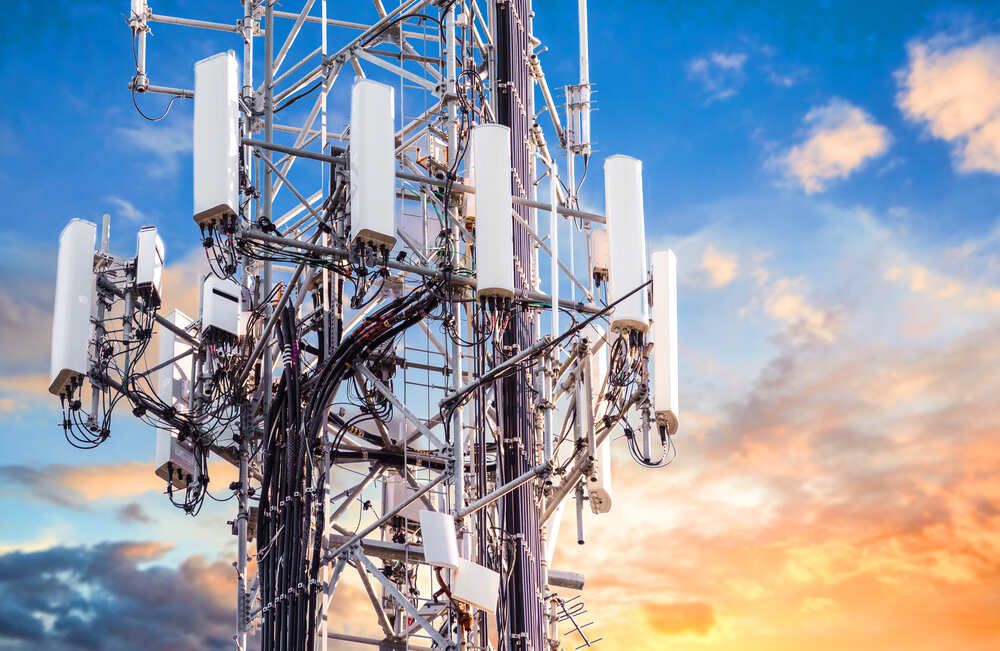
5G
5G ensures better connectivity between vehicles and the cloud, allowing for transmitting greater data sets at a higher speed, five to ten times faster than 4G technology. This way, 5G streamlines vehicle-to-everything communication by seamlessly connecting cars and the infrastructure and enables better fleet management, remote vehicle control, and fast over-the-air software updates.
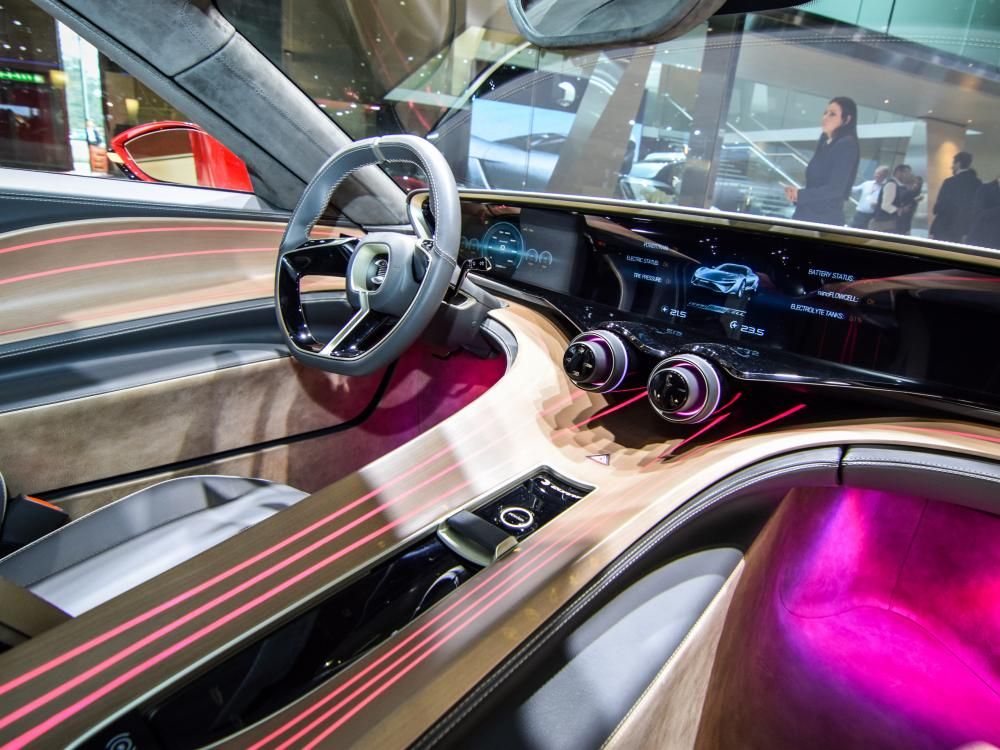
Artificial intelligence
Analyzing large data sets in real-time and uncovering hidden insights, AI algorithms play a crucial role in car predictive maintenance, remote vehicle diagnostics, fleet management, and driver behavior analytics.

Computer vision
Computer vision helps a vehicle “see” the environment and objects around it by gathering and interpreting the data from sensors, LiDAR, and cameras, which makes it an essential part of autonomous vehicle technology, ADAS, and advanced driving safety.

Data analytics
Powerful analytics systems can analyze large data volumes and identify potential equipment faults in advance, streamlining the supply chain and quality management. Advanced analytics is also applied for customer behavior analysis, experience improvement, and effective marketing planning.

Cloud
While basic safety operations like emergency braking or airbag activation are processed by the onboard computer, many functions are performed in the cloud. Over-the-air updates are delivered from the cloud database and downloaded via Wi-FI, and some navigation systems function better in the cloud.
Benefits of automotive IoT
Enhanced safety
IoT-powered vehicles can contribute to greater road, driver, and pedestrian safety due to real-time analysis of data from multiple sensors. With IoT in place, the driver is always aware of their car's condition and can avoid breakdowns on the road or malfunction-related accidents. In addition, the car system can alert the driver on approaching pedestrians and cyclists or even initiate emergency braking.
Optimized car manufacturing
IoT technology enables a high level of automation and predictive maintenance during the car manufacturing process, thus eliminating the likelihood of human errors. Moreover, drawing on IoT-generated data after the vehicle’s sale, car producers can remind the customers when it’s time for servicing. They can also leverage this data to tailor future vehicles according to consumer needs and gain a competitive advantage.
Reduced emissions
By optimizing the car manufacturing process with the Internet of Things, the automotive industry can help reduce emissions and air pollution. The IoT technology in connected cars can optimize individual fuel consumption and energy usage levels. In addition, IoT-based data helps reduce traffic congestion, allowing drivers to maintain optimal speed without unnecessary acceleration or stops.
Personalized user experience
IoT-enabled connected cars offer a more customized experience to their owners through personalized in-vehicle infotainment systems, car settings (like music choice, temperature, and seat position) automatically adjusted to a specific driver, and the connection with smart home systems.
Cost savings
IoT solutions help save money for both manufacturers and drivers. Car makers can benefit from predictive maintenance of their manufacturing equipment and reduce equipment repair expenses, while drivers can reduce car breakdowns. Finally, by opting for IoT-powered vehicles, car owners can reduce insurance premiums.
Better road & traffic management
City managers can leverage the data from IoT-enabled cars to detect highly congested or dangerous parts of the road and take necessary actions to adjust traffic lights timing, secure pathways, and better plan out the overall urban infrastructure.
Common challenges of using IoT in automotive
While automotive IoT technology’s adoption increases each year, car manufacturers still face certain challenges when integrating IoT solutions.
Challenge
Solution
Connectivity
Challenge
High-bandwidth connectivity is critical for cars with assisted or autonomous driving features since even an insignificant loss of connection can lead to a failure in navigation and a possible accident.
Challenge
Solution
For now, the rollout of 5G is the best solution to the connectivity problem. 5G and its future successor, 6G, will be capable of ensuring fast, reliable broadband cellular connection even in rural or remote areas where, at present, network coverage may be spotty.
Cybersecurity
Challenge
With more and more cars going digital, from infotainment systems to over-the-air software updates, connected vehicles are becoming information hubs, but their security is still far from flawless. By gaining unauthorized access to the sensitive data of car owners, hackers can compromise driver privacy and the safety and proper functioning of the autonomous vehicle.
Challenge
Solution
First, the cybersecurity problem of connected cars should be addressed more seriously on the government level, with stronger regulations ensuring the protection of sensitive data.
Car makers, in their turn, should consider the importance of data privacy at the software design level. In addition, regular penetration testing and cybersecurity audits, as well as a robust data encryption policy, will be of much help in achieving the needed security levels.
Lack of technology uniformity
Challenge
Car manufacturers rely on different communication protocols, standards, and operating systems when integrating IoT technology with their vehicles. While technology versatility may not inconvenience drivers, it still leads to compatibility issues for fleet management and different vehicle makes.
Challenge
Solution
First of all, automakers should design automotive IoT systems with flexible architectures, as it will simplify their communication with various fleet management solutions. In addition, the government and automotive industry associations should consider the development of common standards for the automotive IoT industry, including regulations for unified data formats, communication protocols, and standardized security measures.
IoT management in harsh conditions
Challenge
The proper functioning of IoT-enabled cars, like commercial vehicles, under extreme weather conditions or in remote rural areas tends to be disrupted by poor connectivity.
Challenge
Solution
To ensure stable work of embedded IoT systems and continuous data flow in harsh conditions, we recommend minimizing the volume of transmitted data and its buffering and using a thick client that does not require a constant connection to the server.

Transform your automotive business with IoT
Automotive companies are adopting IoT technology at an astonishing pace, irreversibly transforming our driving experiences. Paired with such modern technologies as 5G, AI, cloud computing, and data analytics, automotive IoT solutions facilitate effective fleet management and car production processes and streamline the development of connected cars and fully autonomous vehicles. Despite certain security and connectivity challenges, automotive IoT applications play a vital role in making our roads safer and more comfortable.
If you are interested in integrating IoT into your automotive project, consider turning to our IoT experts for a consultation.

Looking for ways to transform your automotive business?
Automotive IoT FAQ
What are the main protocols used in IoT-enabled cars?
Connected cars usually use cellular networks, like LTE, 4G, 5G, or Wi-Fi, to connect to the internet. To communicate with the road infrastructure and other vehicles, smart vehicles use dedicated short-range communication (DSRC) frequencies. In the meantime, vehicle-to-device communication requires a Bluetooth connection. For example, the Apple CarPlay system utilizes Bluetooth to connect smartphones and wearables with the car’s infotainment system.
What is the difference between IoT in the automotive industry & automotive Industry 4.0?
Although both terms sound similar, there is a difference between them. IoT in the automotive industry refers to the use of the Internet of Things technology in the car manufacturing industry. This includes connected cars equipped with smart sensors and IoT devices, as well as vehicle-to-vehicle (V2V) or vehicle-to-infrastructure (V2I) communication capabilities. At the same time, Automotive Industry 4.0 revolves around the digital transformation of the whole car manufacturing industry. It includes the use of other technologies like artificial intelligence, robotics, additive manufacturing (3D printing), big data, cloud computing, and AR/VR.
What is the future of IoT in automotive?
Since there’s a need for more autonomous cars, IoT is bound to gain wider adoption in the years to come, ensuring improved vehicle automation, greater driving experience, and increased road safety.
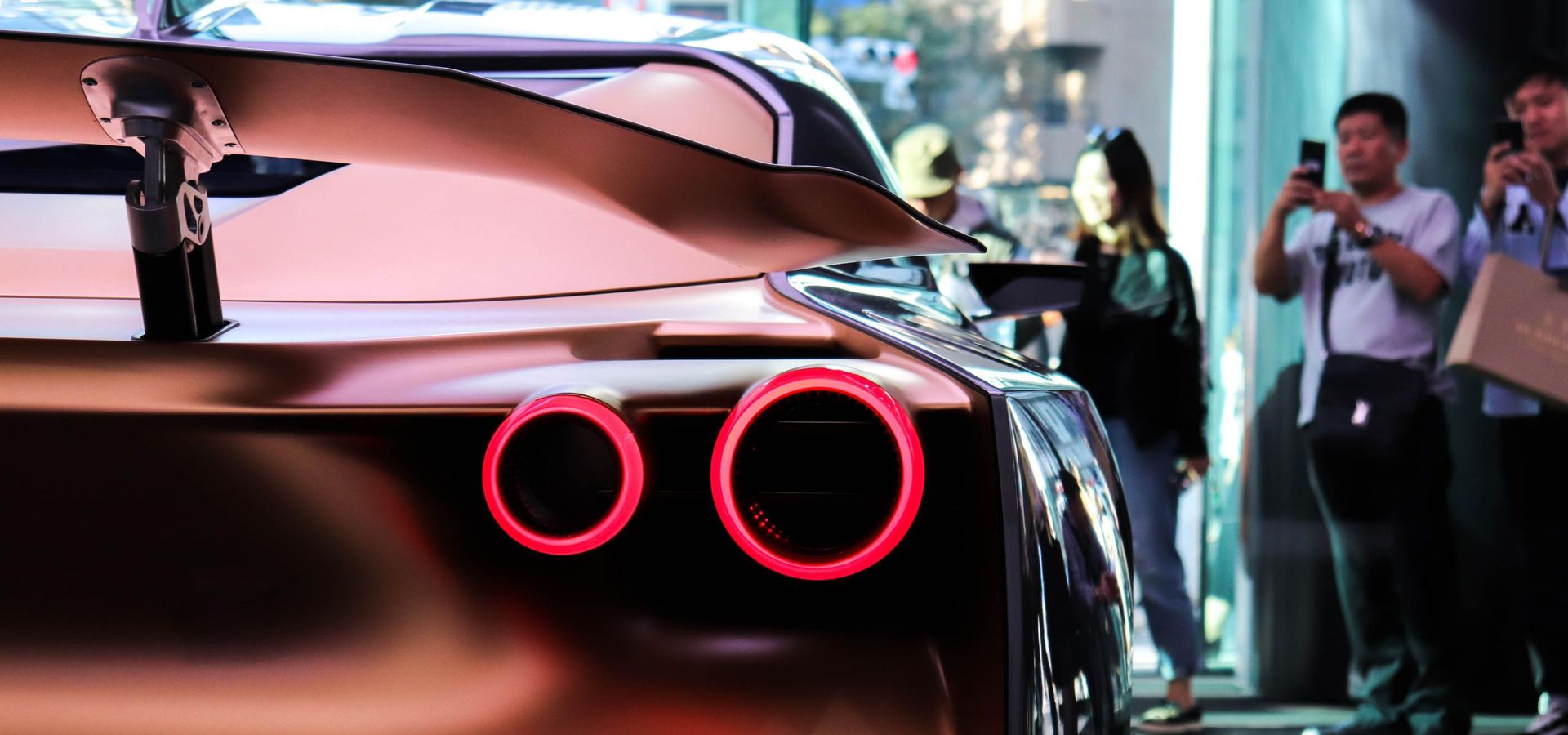
Service
Automotive software development: our services & solutions
Itransition develops solutions for automotive companies to optimize their dealership, manufacturing, and logistics processes, as well as software for vehicles.

Insights
AI in the automotive industry: 20 use cases and examples
Learn how artificial intelligence transforms modern automobiles and discover over 20 use cases and real-life examples of AI in automotive.

Insights
3 types of autonomous vehicle sensors in self‑driving cars
Break down the different types of sensors in autonomous vehicles and how they shape the future of autonomous cars.

Case study
Vehicle data platform for an automotive startup
Learn how Itransition helped a German automotive startup launch a SaaS platform to tracking and selling vehicle data, scoring 12M+ registered vehicles.
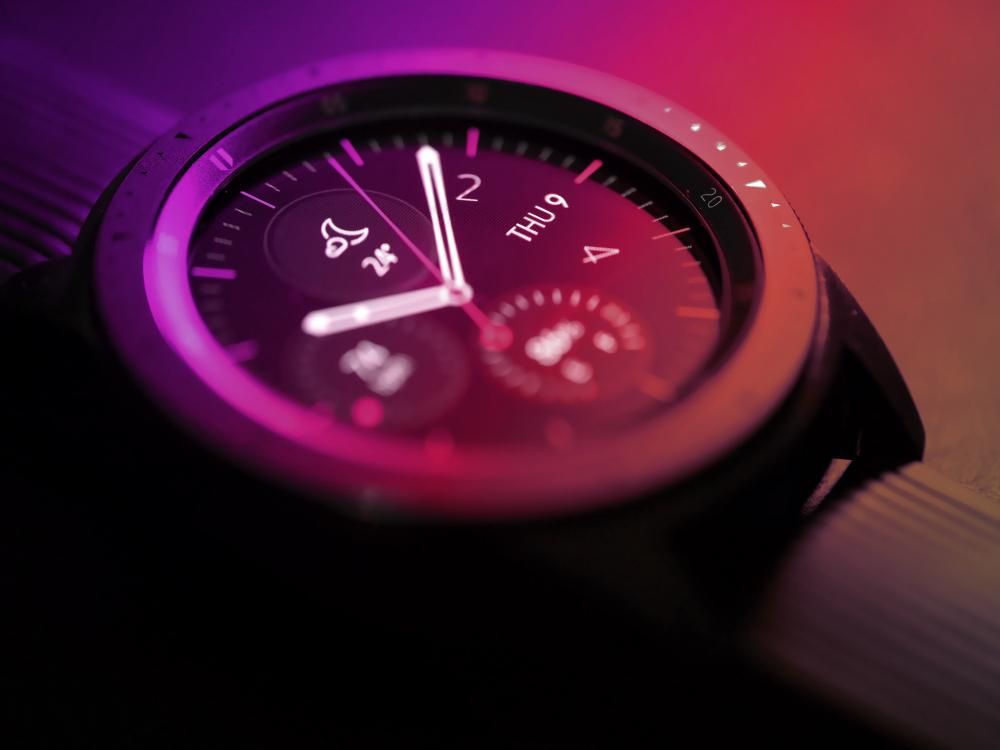
Insights
The IoT history and future
In this article, you will find the timeline of the internet of things history and expert predictions on how the technology will evolve.

Insights
Internet of everything vs internet of things
Do you think IoT and IoE are the same thing? This article will shed light on the differences between the two technologies.